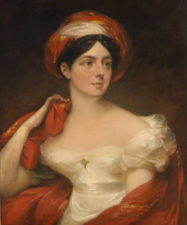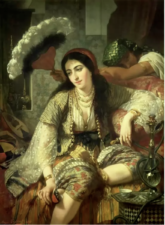 Mary (in English) or Miriam (in Hebrew) or Maryam (in Arabic) was born into the Jewish community around 20BC in Nazareth, Galilee. In the Christian tradition, her birthday is celebrated on the 8th September and in both Christian and Islamic traditions, she is the child of St Joachim and St Anne (or Hannah) – although some bible scholars believe her father was actually named Heli. She is believed to be a direct descendant of Abraham, who fathered the Christian, Jewish and Islamic faiths, and her ancestors include such Jewish luminaries as the Kings David and Solomon. She is a central figure in many religious traditions.
Mary (in English) or Miriam (in Hebrew) or Maryam (in Arabic) was born into the Jewish community around 20BC in Nazareth, Galilee. In the Christian tradition, her birthday is celebrated on the 8th September and in both Christian and Islamic traditions, she is the child of St Joachim and St Anne (or Hannah) – although some bible scholars believe her father was actually named Heli. She is believed to be a direct descendant of Abraham, who fathered the Christian, Jewish and Islamic faiths, and her ancestors include such Jewish luminaries as the Kings David and Solomon. She is a central figure in many religious traditions.
According to the book of Luke, Mary was visited by an angel as a young woman, while she was engaged to be married to Joseph, a Jewish carpenter and also a descendant of Abraham. The angel told her that she had found favour with God and would give birth to his son, who would be called Jesus. Mary asked how this was possible, as she was a virgin, and the angel replied that the Holy Spirit would come upon her. She replied, ‘I am the Lord’s servant; may it be as you have said’. When Mary discovered she was pregnant, she told Joseph who – as he was also obedient to God- chose to marry her anyway. When she was nearing the end of her pregnancy, the government decreed that a census be taken and so Joseph took Mary to his hometown of Bethlehem to register, and while there, she gave birth to a child, who would become known as Jesus Christ. Eventually Mary and Joseph returned home to Nazareth, where they lived quietly and Joseph, at least, had several more children, including four more sons. Mary crops up again in the Bible at various events where Jesus performs miracles, and witnesses his crucifixion. She was also found praying amongst his apostles after Jesus’ resurrection from death and ascension into heaven.
Mary’s obedience to God as well as the virgin birth led to her being venerated across the world. The Islamic tradition views Maryam as a holy woman and mother to the prophet Jesus- although it does not view Jesus or Mary as divine. The Qur’an dedicates a chapter to the story of Mary and the virgin birth of Jesus. In the Hindu faith, Mary is sometimes worshipped amongst many other gods and goddesses, and usually holds the characteristics of Mary in the Christian faith. Many Christians, particularly from Presbyterian backgrounds, believe that Mary was blessed to have been chosen as a vessel for God’s work, but otherwise see her as a normal human being, who went on to have a conventional life after Jesus’ birth- including becoming the mother of Jesus’ siblings. For Roman Catholics and many Anglicans, Mary takes on greater significance. She is believed to have perpetual virginity- meaning that she was a virgin both before Christ’s birth; that she retained her virginity despite giving birth, and that she continued a virgin for the remainder of her life. Mary is also held to be the mother of God- that is the mother of a divine being, not just the mother of a human incarnation of God, and so is sometimes seen as the mother of heaven. She is thought to have ascended to heaven at the end of her life, rather than dying- an event celebrated in the West on the 15th August and on the 28th August in Eastern orthodoxy. She is believed to have been conceived immaculately, like Christ himself- which means that she is one of a very small number of people born without original sin (the part of human nature that ensures that humans will sin and so need to be saved by Jesus Christ through the sacrifice of his death and resurrection).
Devotion to Mary in the Christian church has tended to be driven by traditional beliefs held by local populations, rather than by the Church leadership. The push for Mary’s Immaculate Conception to become part of Catholic dogma appears to have come from below- in 1854, when the Church made this doctrine part of their dogma, the Pope wrote to his bishops, who in turn wrote to their priests, who asked their congregations, before it was agreed that this was the general consensus. As a result, like many Saints, Mary has taken on the characteristics of many Pre-Christian goddesses that continued to hold importance among the laity. Like many early goddesses, Mary is the mother of a young God who dies, descends and is resurrected- reflecting the seasonal cycle of spring, summer, autumn and winter- and the associated saving of humanity. The relationship between Mary and Jesus has often been compared to that of the Egytian deities Isis and Horus, and the Assyrian gods Isthar and Tammuz.
While Mary is often promoted as a model of chastity and obedience, as the mother of heaven- as well as her association with older Pre-Christian gods- she is also a figure of authority and respect. She has held multiple and complex meanings for different people. As a result, she has been a popular exemplar amongst women as a religious model of behaviour- allowing them a degree of flexibility and choice in their actions.
Katie Barclay is a historian at Queen’s University, Belfast. She is away to make some lasagne for dinner.


